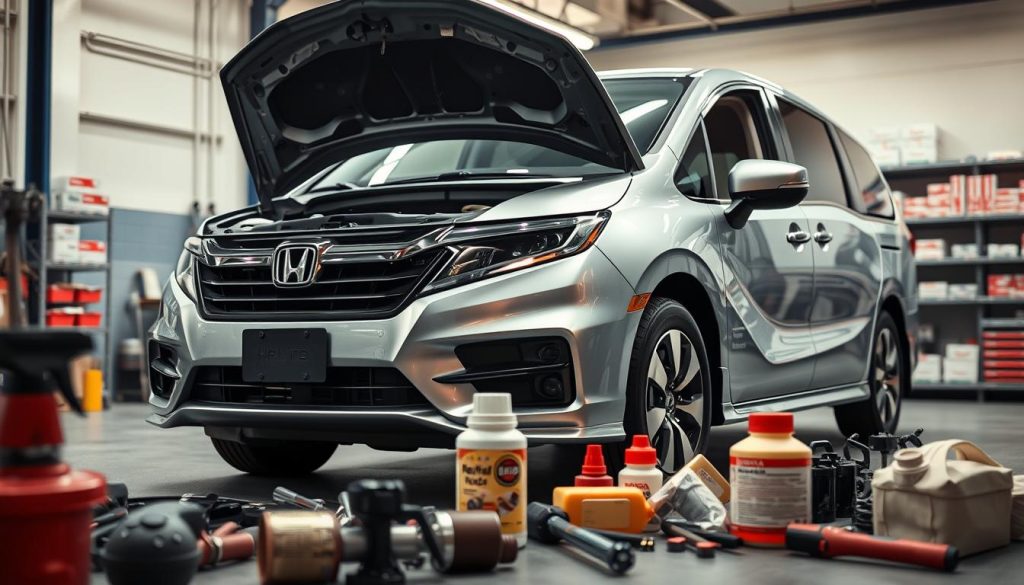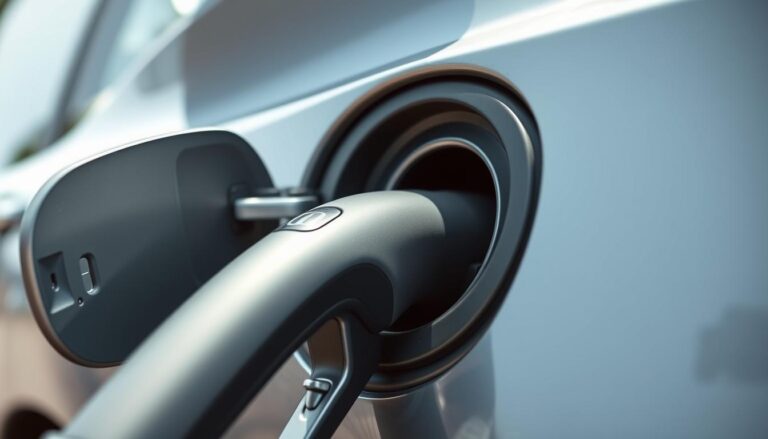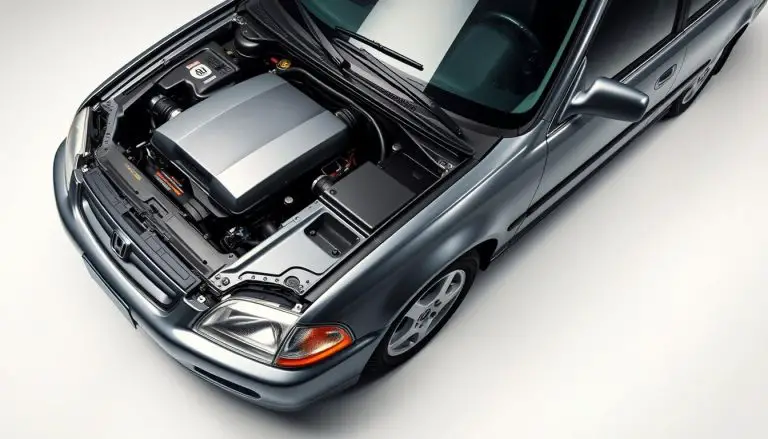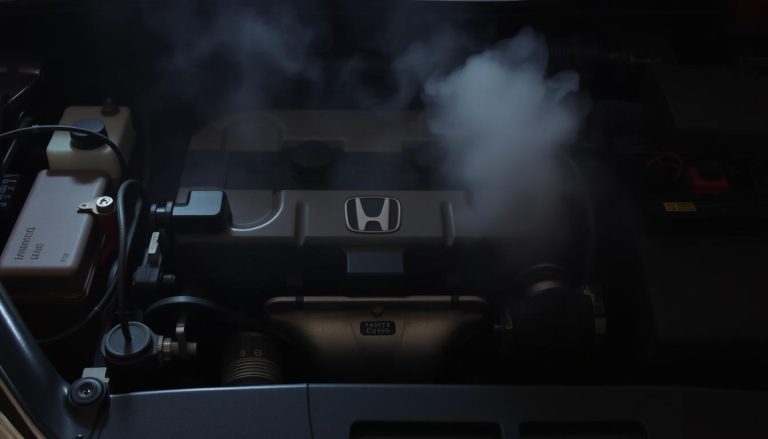Ready to protect your family van and stretch its useful life? This guide explains realistic expectations for a well-cared-for honda odyssey and the practical service steps that keep it rolling.
Families choose this eight-seat car for space, reliability, and long service life. With steady upkeep, many owners report lifespans near 300,000 miles; high-mile examples often start around 250,000 miles.
We outline the best way to extend life: scheduled checks, prompt fixes for small faults, and gentle driving to cut wear on the engine, transmission, brakes, and suspension.
This short intro previews an organized list of topics: expected years and mileage, routine service guidance, buying tips for high-mile examples, and common issues to watch. Use this information to protect value, safety, and comfort for years to come.
Key Takeaways
- Expect about 300,000 miles with consistent care; high-mile typically begins near 250,000.
- Prioritize scheduled service and early repairs to prevent costly failures.
- Watch for rust, fluid leaks, and transmission signs to act quickly.
- Gentle driving habits reduce long-term wear on major systems.
- This guide gives a practical checklist and inspection list for buyers and owners.
Honda Odyssey Longevity at a Glance: Expected Miles, Years, and What Counts as High Mileage
Knowing typical mile markers and service triggers helps protect value and reliability.
With steady care, this vehicle commonly reaches 200,000–300,000 miles over roughly 12–20 years. Many owners treat about 250,000 miles as the high mileage threshold, but condition and records matter more than the odometer alone.
Factors that change lifespan include climate, road salt exposure, duty cycle (city versus highway), and adherence to service intervals. Rust prevention and routine checks limit big failures.
- Track oil and fluids and note changes in color or smell.
- Watch brake feel and steering alignment; address vibrations early.
- Schedule inspections before long trips to catch wear items.
Remember: sustained highway miles are easier on the powertrain than short, cold trips. A clean service history plus a recent inspection often outweighs a high reading on the odometer.
How Many Miles Can You Put on a Honda Odyssey: Longevity and Maintenance Tips
Disciplined upkeep combined with gentle use is the single best way to preserve long-term reliability.
Benchmarks: Plan for 200,000–300,000+ miles when service is regular and problems are fixed early. Rare, well-kept examples go farther when owners follow schedules and use quality parts.
Maintenance cadence: Prioritize oil and filter changes, inspect engine and cabin filters, and replace transmission, coolant, and brake fluid per Honda codes. Regular tire rotations and alignments protect tires and suspension.
- Timing belt and water pump: replace together at the recommended interval to avoid major engine damage.
- Brakes: check pad thickness, rotor runout, and brake fluid to prevent uneven wear.
- Diagnostics: address warning lights, misfires, and leaks quickly so mechanics can limit repairs.
High‑mile service (≈230,000 mile): certified technicians inspect leaks, fluids, belts, mounts, joints, and steering with Honda diagnostics and genuine parts. This checkpoint reduces unexpected cost and preserves lifespan.

| Service Area | What to Check | Typical Action |
|---|---|---|
| Engine | Oil condition, belts, leaks | Oil change, belt replacement, gasket repair |
| Transmission | Fluid level/quality, shifts | Fluid service, diagnostics |
| Brakes & Tires | Pad depth, rotor runout, pressure | Pad/rotor service, rotate, align |
| Underbody | Rust, drain holes, undercarriage wash | Rust treatment, seal chips, underbody wash |
Buying or Keeping a High-Mileage Odyssey: When 100k-250k Miles Is a Good Deal
A well-kept, higher‑odometer Odyssey can still represent solid value when maintenance records are complete and the van drives without odd noises or lights. A clean history often beats a lower-mile car with unknown repairs.

Pre-purchase inspection checklist
- Confirm oil, transmission, coolant, and brake fluid service in the records.
- Verify timing belt service if the year and mileage indicate it is due.
- Scan for stored codes and ensure no check‑engine or ABS lights are active.
- Check brakes for pulsation (often warped rotors) and listen for suspension clunks.
Road test and fluid evaluation
During a road test, watch for delayed shifts, steering wander, and harsh engagement. Inspect fluids: oil should not be tar‑thick, coolant should be clear, and transmission fluid must not smell burnt.
Budgeting and ownership value
Plan money for wear items and potential catch‑up service. Set aside funds for brakes, tires, battery, and a timing belt/water pump job if needed. Preemptive care reduces the risk of costly repairs and protects safety.
Final tip: Have an independent shop or Honda specialist perform a pre‑purchase check. A well-documented, tight‑driving van can be a good deal and a reliable next vehicle with the right service plan.
Common Honda Odyssey Issues to Watch: Transmission, Sliding Doors, Brakes, and Warning Lights
A few telltale symptoms—noises, warning lights, or sticky doors—deserve fast attention. Catching them early reduces the chance of costly repairs and secondary damage.
Transmission symptoms to note
Slipping, delayed shifts, or D4 anomalies often show as change in shift feel or a persistent check engine light. Scan codes immediately and check fluid level and condition to limit damage.
Electric sliding door glitches
Test motor function, switch response, and latch alignment. Dirt in tracks or weak actuators usually cause faults and are simple to fix before parts fail.
Brake vibration and rotor concerns
Steering shake under braking typically means warped front rotors. Resurfacing or replacing rotors, bedding pads, and proper wheel torque restores safe stopping.
Recalls, TSBs, and software updates
Close out recalls and install TSB fixes or software patches to improve shift logic and system behavior. Regular service and timely diagnostics keep this vehicle reliable for years.
- Pro tip: Document conditions (temp, speed, time) for intermittent faults so mechanics can reproduce the issue.
- Use reputable parts and follow torque specs to avoid repeat visits.
Conclusion
Prioritizing routine checks and quick fixes is the most reliable way to protect value and avoid costly failures.
With consistent service and scheduled maintenance, this honda odyssey will serve as a dependable family vehicle for many years and miles. Keep fluid changes, timing work, brakes, and tires current to limit wear to the engine and transmission.
When buying used, let condition and records decide the deal. Confirm recalls, run a pre-purchase inspection, and budget for catch-up work if needed. Keep safety first: check brakes, steering, lights, and tires routinely. As technology changes, stay current with software updates and TSBs to improve shift quality and fuel economy.
The best way to reach your mileage goals is steady care, timely service, and prompt attention to any warning light.
FAQ
What mileage should I expect from a well-maintained Honda Odyssey?
With routine service, many Honda Odysseys reach 200,000–300,000 miles and beyond. Regular oil changes, timely fluid service, attention to the transmission, and prompt repairs of small issues extend useful life. Driving style, climate, and load also play big roles in real-world longevity.
Which routine services most affect long-term durability?
Prioritize oil and filter changes, transmission fluid and filter service, coolant and brake-fluid changes, and fresh air/cabin filters. Stick to Honda service intervals and address dashboard warnings quickly. These steps reduce wear and prevent expensive failures later.
When should timing components and the water pump be replaced?
Replace timing belts and inspect the water pump per Honda’s service schedule—typically around recommended intervals depending on model year and engine. Replacing both together saves labor and lowers risk of catastrophic engine damage.
What transmission signs indicate immediate attention is needed?
Watch for slipping, rough or delayed shifts, strange noises, burning smell, or persistent D4/check engine lights. Early transmission fluid changes and diagnostics often prevent full rebuilds. Have a certified technician scan codes and pressure-test the system.
How do driving habits and load affect vehicle life?
Frequent short trips, heavy towing, or carrying full loads increase stress on engine, transmission, brakes, and suspension. Gentle acceleration, steady highway driving, and avoiding excess weight lengthen component life and reduce service costs.
What underbody care prevents rust and structural issues?
Regularly clean the undercarriage, especially after winter salt exposure. Apply rust-inhibiting treatments and inspect for corrosion during services. Addressing surface rust early prevents frame, brake-line, and exhaust problems.
What do technicians examine during a high-mileage service at about 230,000 miles?
They typically inspect the transmission, engine mounts, timing system, cooling system, suspension, brakes, steering components, and check for oil or coolant leaks. Belts, hoses, and electrical connectors get special attention to catch impending failures.
Is buying an Odyssey with 100k–250k miles a good deal?
It can be, if maintenance records are solid and the van passes a thorough inspection. Look for a clean service history, no recurrent check-engine issues, fresh brakes and tires, and a smooth test drive. Factor in expected repairs and remaining useful life when evaluating price.
What should I inspect during a used-vehicle check?
Verify service records, scan for stored codes, test the brakes for vibration or pull, check fluid levels and condition, and perform a road test at various speeds. Inspect the sliding doors, electrical systems, and underbody for leaks or rust.
How should I budget for ownership costs on a higher-mileage model?
Budget for scheduled major services (timing belt, transmission service), likely brake or suspension work, and occasional electrical or cooling-system repairs. Set aside a contingency fund for unexpected issues or part replacements common on older vans.
What are the most common mechanical problems to watch for?
Common concerns include transmission wear, electric sliding-door malfunctions, brake vibration from warped rotors, and occasional sensor or software faults triggering check-engine lights. Prompt diagnosis and repair reduce cascading damage.
How do sliding-door issues present and when is service required?
Symptoms include slow or uneven operation, grinding noises, or doors that won’t latch. Check tracks and lubricate moving parts first; if problems persist, inspect the motor, wiring, and control modules at a Honda dealer or qualified shop.
What causes brake vibration and how can I prevent it?
Vibration often stems from warped rotors, uneven pad wear, or loose suspension components. Preventive steps include regular brake inspections, avoiding excessive heat from repeated hard stops, and resurfacing or replacing rotors when necessary.
How important are recalls, TSBs, and software updates?
Very important. Recalls address safety defects, and technical service bulletins (TSBs) provide manufacturer guidance for recurring issues. Keep firmware and control-module software up to date to improve reliability and avoid known faults.
When should I consider replacing the van instead of repairing it?
Consider replacement when repair costs approach a significant fraction of vehicle value, when safety or reliability decline, or when cumulative maintenance costs outweigh the benefits of keeping the vehicle. Also weigh evolving family needs and modern safety tech found in newer models.


